#30 May 1922
Photo

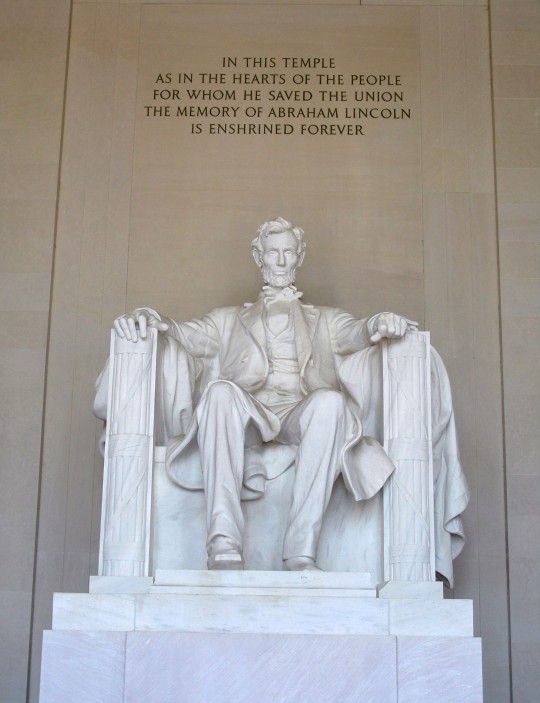





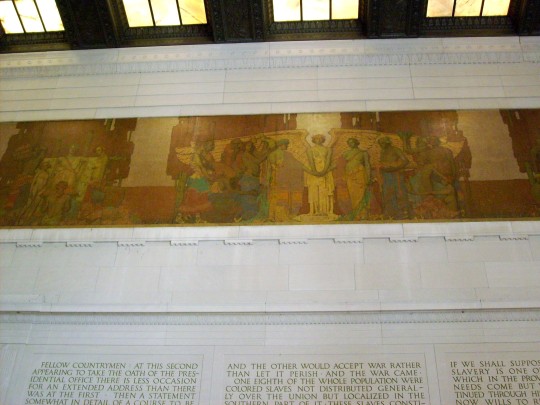

The Lincoln Memorial was dedicated in Washington, D.C. on May 30, 1922.
#Lincoln Memorial#dedicated#30 May 1922#anniversary#US history#USA#Washington Street#summer 2009#Abraham Lincoln#architecture#sculpture#public art#tourist attraction#landmark#cityscape#National Mall#reflecting pool#Henry Bacon#Daniel Chester French#Greek Revival–style#Washington Monument#Gettysburg Address#original photography#Washington DC
8 notes
·
View notes
Text

— May 30, 1922 / Franz Kafka diaries
115 notes
·
View notes
Photo

My father, Susumu Yamashita, was a junior executive at the San Francisco branch of Mitsubishi trading company before the December 7, 1941 Japanese attack at Pearl Harbor. On April 30, 1942, he was involved in the mass forced removal of the Japanese American community from Berkeley to Tanforan detention center, a former race track in San Bruno, with my mother, Kiyoko Yamashita, and my 18 month-old sister Kimiko. My family was housed in a horse-stall “apartment” from May to September. When my family was transported to the Topaz, Utah incarceration camp in September 1942, my father was assigned to be the liaison to the Issei (first-generation) residents due to his Japanese-language proficiency, which was gained from his 11 years of education in Tokyo between 1911–1922. This is why he was labeled as a “Kibei,” American born but educated in Japan. After working 14 months in Community Welfare, providing the camp’s social services, my father was ready for a change. My Cal Berkeley/Harvard Business School-alumnus, ex-businessman father asked to be transferred to the agricultural division to work as a ranch hand. He achieved personal satisfaction from working outdoors as a Kibei cowboy, tanned and healthy, herding cattle astride his favorite horse, Red. At age 39, he was undoubtedly one of the oldest “cowboys” amongst the riders at the Topaz cattle ranch. In 1951 he rejoined Mitsubishi and was charged with establishing its New York headquarters as the new Mitsubishi International Corporation. After Topaz, my father never rode a horse again.
Michael Yamashita
#Susumu Yamashita#western riding#Utah#Topaz War Relocation Center#Central Utah Relocation Center (Topaz)#world war II#WWII#Michael Yamashita
170 notes
·
View notes
Text

1969-71 Continental Mark III
Iacocca’s Lincoln: The Inside Story of the 1969-71 Continental Mark III
Lee Iacocca is remembered as the father of the Ford Mustang and the Chrysler Minivan, but there was another Iacocca vehicle that changed the Motor City: the Lincoln Continental Mark III.
In auto industry lore, the design studio guys hate it when the people from upper management start fooling around with their work. Nothing good can come from that, or so the story goes. But there’s at least one instance that cuts against the grain of that familiar Motor City tale. It was Ford senior executive Lee Iacocca who originated the two signature styling features of the Lincoln Continental Mark III: the classic stand-up grille and the faux tire bustle in the deck lid.
It’s no exaggeration to note that these visual features created a design theme and defined the Lincoln Mark Series brand for decades. Years later, lead designer L. David Ash would recall that neither he nor Styling VP Gene Bordinat had conceived these two now-famous design gadgets; no, in fact it was all Iacocca. “Neither one of us would have done it on our own, I’m sure,” Ash remembered. “I have to give Lee credit for that.”

As vice president of the Ford Motor Company’s car and truck group—top product boss, among other duties—Lido Anthony “Lee” Iacocca had at least two problems on his plate in the autumn of 1965. First, sales of the Ford Thunderbird had flattened out after a promising start years earlier. Meanwhile, Ford’s flagship Lincoln division wasn’t setting the world on fire, either. While the Elwood Engel-designed 1961 Lincoln was a style maker of the decade, it was nearing the end of its product cycle. Actually, Lincoln was a perennial problem for Ford senior management. According to Bordinat, it had never turned an actual profit since Henry and Edsel Ford acquired the company from the Lelands in 1922.
So a plan was hatched to build a new, small Lincoln on the same platform as the Thunderbird, which was switching to body-on-frame construction for 1967 (in part due to limited production volume). This would help the Thunderbird fill out production capacity at the Wixom, Michigan plant, and it would give Lincoln an entry in the rapidly expanding personal-luxury category, joining the Buick Riviera, Cadillac Eldorado, Olds Toronado, et alia.

The original body design by Ash and his staff, at one point named the Lancelot, was clean and elegant but lacked visual punch, one could argue. Iacocca’s fake-Rolls grille shell and spare-tire bump fixed that, creating a distinctive and memorable look. It was said that the chrome grille shell was the most expensive such piece in the industry, with a unit cost nearing $200. Ash and crew completed the theme by hiking up the rear quarters and deck lid two inches, scrunching the roof down into the body for a classic ’30s profile.
From its exterior appearance, you might never know that the finished design shared its greenhouse with the Thunderbird coupe, or its floorpan, black metal, and 117.2-inch wheelbase with the T-Bird four-door. When Henry Ford II saw the clay model in the studio, he reportedly said, “I’d like to drive that home.” With the Ford family’s seal of approval secured, the new car was christened the Continental Mark III, establishing its lineage with Edsel Ford’s original 1939 Continental and the Continental Mark II of 1956-57. At that point the previous Mark III, IV and V models of 1958-60 were conveniently forgotten—today it would be called a reboot.

Introduced in April 1968 as a 1969 model, technically (Lincoln division downplayed model year designations, trying to present the car as “timeless”) the Mark III was panned by the critics but embraced by the car-buying public. “The buffs may not like it but the people with money will,” Bordinat wisely predicted. The Mark wasn’t big for an American luxury car at just over 216 inches long and 4,800 lbs, but it was big enough, with solid road manners and a comfortable ride. Interior specialist Herman Brunn covered the seats with rich, pre-creased leather, like the easy chairs in a men’s club. Noteworthy technical features included an all-new 460 CID V8 and Sure-Track, an early form of antilock braking developed by Kelsey-Hayes.
With a base price of $6,758 compared to $4,807 for its Thunderbird cousin, the Mark III was quite a moneymaker for the Motor Company, spawning an even more popular and profitable successor, the Mark IV (shown with Iacocca below). The Mark series, which comfortably outsold the Eldorado and effectively doubled the Lincoln division’s volume at times, continued on all the way to 1998 and the Mark VIII, and Iacocca would to on to further glories, including the Chrysler Minivan.

43 notes
·
View notes
Text
(Mostly) Lost, but Not Forgotten: Omar Khayyam (1923) / A Lover’s Oath (1925)

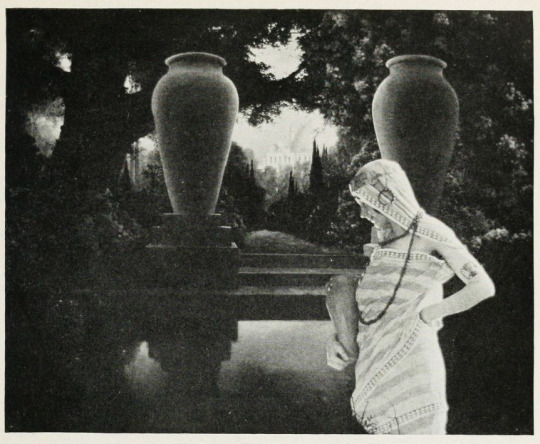
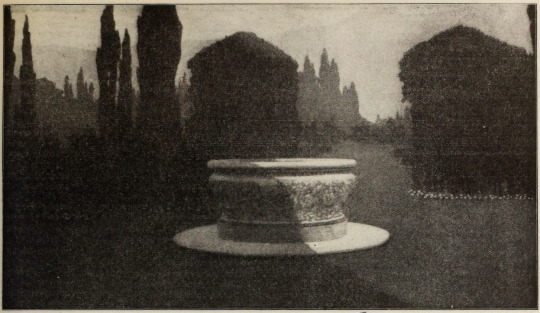

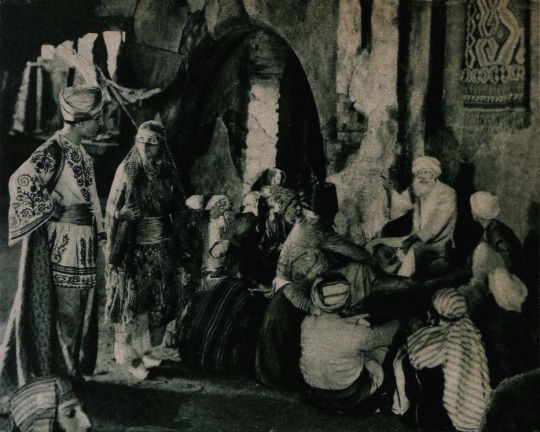
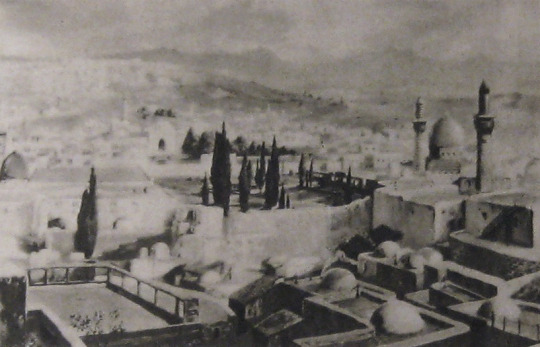

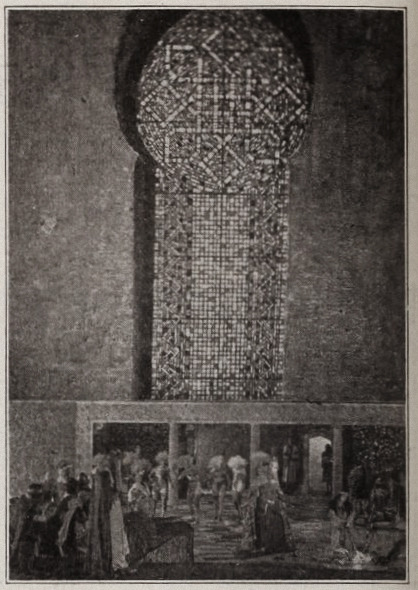
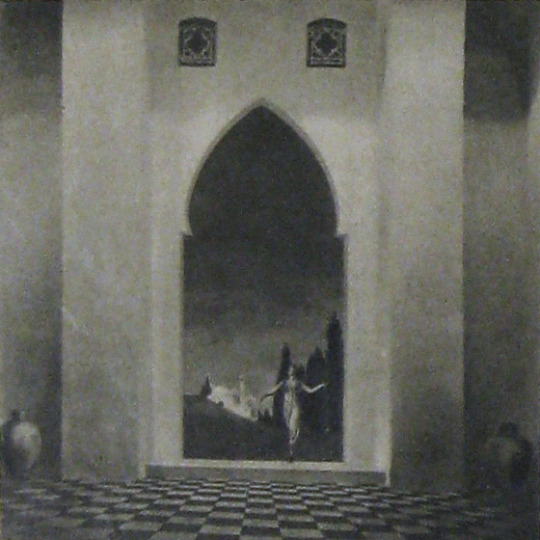


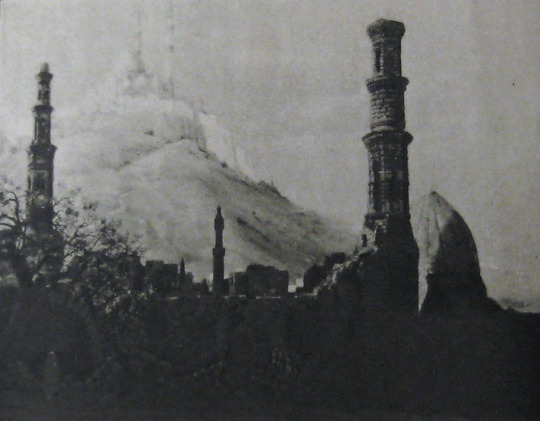
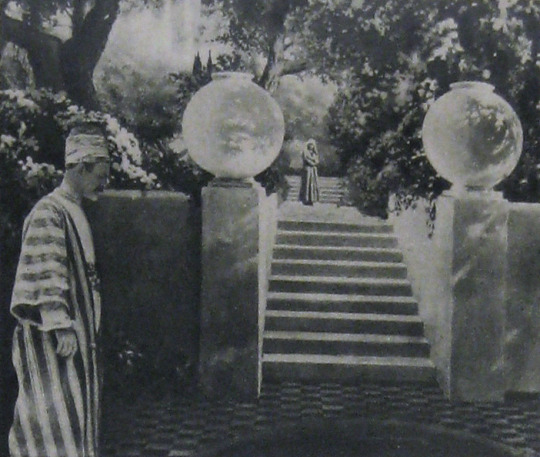
Alternate Titles: The Rubaiyat of Omar Khayyam, The Rubaiyat, Omar Khayyam, Omar
Direction: Ferdinand Pinney Earle; assisted by Walter Mayo
Scenario: Ferdinand P. Earle
Titles: Marion Ainslee, Ferdinand P. Earle (Omar), Louis Weadock (A Lover’s Oath)
Inspired by: The Rubaiyat of Omar Khayyam, as edited & translated by Edward FitzGerald
Production Manager: Winthrop Kelly
Camera: Georges Benoit
Still Photography: Edward S. Curtis
Special Photographic Effects: Ferdinand P. Earle, Gordon Bishop Pollock
Composer: Charles Wakefield Cadman
Editors: Arthur D. Ripley (The Rubaiyat of Omar Khayyam version), Ethel Davey & Ferdinand P. Earle (Omar / Omar Khayyam, the Director’s cut of 1922), Milton Sills (A Lover’s Oath)
Scenic Artists: Frank E. Berier, Xavier Muchado, Anthony Vecchio, Paul Detlefsen, Flora Smith, Jean Little Cyr, Robert Sterner, Ralph Willis
Character Designer: Louis Hels
Choreography: Ramon Novarro (credited as Ramon Samaniegos)
Technical Advisors: Prince Raphael Emmanuel, Reverend Allan Moore, Captain Dudley S. Corlette, & Captain Montlock or Mortlock
Studio: Ferdinand P. Earle Productions / The Rubaiyat, Inc. (Production) & Eastern Film Corporation (Distribution, Omar), Astor Distribution Corporation [States Rights market] (Distribution, A Lover’s Oath)
Performers: Frederick Warde, Edwin Stevens, Hedwiga Reicher, Mariska Aldrich, Paul Weigel, Robert Anderson, Arthur Carewe, Jesse Weldon, Snitz Edwards, Warren Rogers, Ramon Novarro (originally credited as Ramon Samaniegos), Big Jim Marcus, Kathleen Key, Charles A. Post, Phillippe de Lacy, Ferdinand Pinney Earle
Premiere(s): Omar cut: April 1922 The Ambassador Theatre, New York, NY (Preview Screening), 12 October 1923, Loew’s New York, New York, NY (Preview Screening), 2 February 1923, Hoyt’s Theatre, Sydney, Australia (Initial Release)
Status: Presumed lost, save for one 30 second fragment preserved by the Academy Film Archive, and a 2.5 minute fragment preserved by a private collector (Old Films & Stuff)
Length: Omar Khayyam: 8 reels , 76 minutes; A Lover’s Oath: 6 reels, 5,845 feet (though once listed with a runtime of 76 minutes, which doesn’t line up with the stated length of this cut)
Synopsis (synthesized from magazine summaries of the plot):
Omar Khayyam:
Set in 12th century Persia, the story begins with a preface in the youth of Omar Khayyam (Warde). Omar and his friends, Nizam (Weigel) and Hassan (Stevens), make a pact that whichever one of them becomes a success in life first will help out the others. In adulthood, Nizam has become a potentate and has given Omar a position so that he may continue his studies in mathematics and astronomy. Hassan, however, has grown into quite the villain. When he is expelled from the kingdom, he plots to kidnap Shireen (Key), the sheik’s daughter. Shireen is in love with Ali (Novarro). In the end it’s Hassan’s wife (Reicher) who slays the villain then kills herself.
A Lover’s Oath:
The daughter of a sheik, Shireen (Key), is in love with Ali (Novarro), the son of the ruler of a neighboring kingdom. Hassan covets Shireen and plots to kidnap her. Hassan is foiled by his wife. [The Sills’ edit places Ali and Shireen as protagonists, but there was little to no re-shooting done (absolutely none with Key or Novarro). So, most critics note how odd it is that all Ali does in the film is pitch woo, and does not save Shireen himself. This obviously wouldn’t have been an issue in the earlier cut, where Ali is a supporting character, often not even named in summaries and news items. Additional note: Post’s credit changes from “Vizier” to “Commander of the Faithful”]
Additional sequence(s) featured in the film (but I’m not sure where they fit in the continuity):
Celestial sequences featuring stars and planets moving through the cosmos
Angels spinning in a cyclone up to the heavens
A Potters’ shop sequence (relevant to a specific section of the poems)
Harem dance sequence choreographed by Novarro
Locations: palace gardens, street and marketplace scenes, ancient ruins


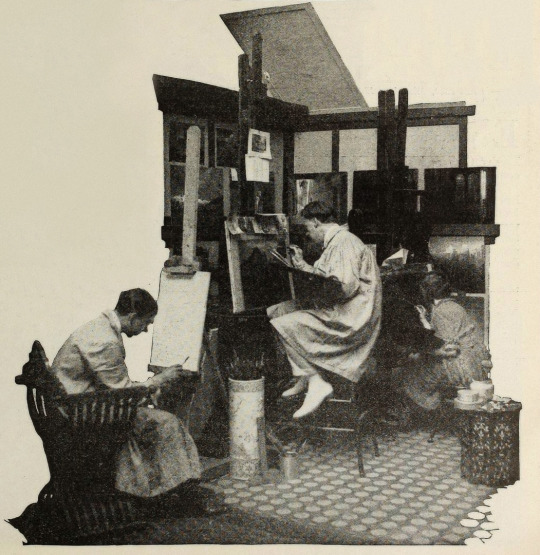


Points of Interest:
“The screen has been described as the last word in realism, but why confine it there? It can also be the last word in imaginative expression.”
Ferdinand P. Earle as quoted in Exhibitors Trade Review, 4 March 1922
The Rubaiyat of Omar Khayyam was a massive best seller. Ferdinand Pinney Earle was a classically trained artist who studied under William-Adolphe Bougueraeu and James McNeill Whistler in his youth. He also had years of experience creating art backgrounds, matte paintings, and art titles for films. Charles Wakefield Cadman was an accomplished composer of songs, operas, and operettas. Georges Benoit and Gordon Pollock were experienced photographic technicians. Edward S. Curtis was a widely renowned still photographer. Ramon Novarro was a name nobody knew yet—but they would soon enough.
When Earle chose The Rubaiyat as the source material for his directorial debut and collected such skilled collaborators, it seemed likely that the resulting film would be a landmark in the art of American cinema. Quite a few people who saw Earle’s Rubaiyat truly thought it would be:
William E. Wing writing for Camera, 9 September 1922, wrote:
“Mr. Earle…came from the world of brush and canvass, to spread his art upon the greater screen. He created a new Rubaiyat with such spiritual colors, that they swayed.”
…
“It has been my fortune to see some of the most wonderful sets that this Old Earth possesses, but I may truly say that none seized me more suddenly, or broke with greater, sudden inspiration upon the view and the brain, than some of Ferdinand Earle’s backgrounds, in his Rubaiyat.
“His vision and inspired art seem to promise something bigger and better for the future screen.”
As quoted in an ad in Film Year Book, 1923:
“Ferdinand Earle has set a new standard of production to live up to.”
Rex Ingram
“Fifty years ahead of the time.”
Marshall Neilan
The film was also listed among Fritz Lang’s Siegfried, Chaplin’s Gold Rush, Fairbanks’ Don Q, Lon Chaney’s Phantom of the Opera and The Unholy Three, and Erich Von Stroheim’s Merry Widow by the National Board of Review as an exceptional film of 1925.
So why don’t we all know about this film? (Spoiler: it’s not just because it’s lost!)
The short answer is that multiple dubious legal challenges arose that prevented Omar’s general release in the US. The long answer follows BELOW THE JUMP!
Earle began the project in earnest in 1919. Committing The Rubaiyat to film was an ambitious undertaking for a first-time director and Earle was striking out at a time when the American film industry was developing an inferiority complex about the level of artistry in their creative output. Earle was one of a number of artists in the film colony who were going independent of the emergent studio system for greater protections of their creative freedoms.
In their adaptation of The Rubaiyat of Omar Khayyam, Earle and Co. hoped to develop new and perfect existing techniques for incorporating live-action performers with paintings and expand the idea of what could be accomplished with photographic effects in filmmaking. The Rubaiyat was an inspired choice. It’s not a narrative, but a collection of poetry. This gave Earle the opportunity to intersperse fantastical, poetic sequences throughout a story set in the lifetime of Omar Khayyam, the credited writer of the poems. In addition to the fantastic, Earle’s team would recreate 12th century Persia for the screen.
Earle was convinced that if his methods were perfected, it wouldn’t matter when or where a scene was set, it would not just be possible but practical to put on film. For The Rubaiyat, the majority of shooting was done against black velvet and various matte photography and multiple exposure techniques were employed to bring a setting 800+ years in the past and 1000s of miles removed to life before a camera in a cottage in Los Angeles.
Note: If you’d like to learn a bit more about how these effects were executed at the time, see the first installment of How’d They Do That.
Unfortunately, the few surviving minutes don’t feature much of this special photography, but what does survive looks exquisite:

see all gifs here
Earle, knowing that traditional stills could not be taken while filming, brought in Edward S. Curtis. Curtis developed techniques in still photography to replicate the look of the photographic effects used for the film. So, even though the film hasn’t survived, we have some pretty great looking representations of some of the 1000s of missing feet of the film.
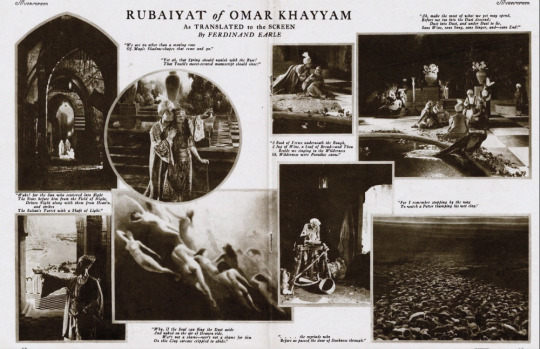
Nearly a year before Curtis joined the crew, Earle began collaboration with composer Charles Wakefield Cadman. In another bold creative move, Cadman and Earle worked closely before principal photography began so that the score could inform the construction and rhythm of the film and vice versa.
By the end of 1921 the film was complete. After roughly 9 months and the creation of over 500 paintings, The Rubaiyat was almost ready to meet its public. However, the investors in The Rubaiyat, Inc., the corporation formed by Earle to produce the film, objected to the ample reference to wine drinking (a comical objection if you’ve read the poems) and wanted the roles of the young lovers (played by as yet unknown Ramon Novarro and Kathleen Key) to be expanded. The dispute with Earle became so heated that the financiers absconded with the bulk of the film to New York. Earle filed suit against them in December to prevent them from screening their butchered and incomplete cut. Cadman supported Earle by withholding the use of his score for the film.
Later, Eastern Film Corp. brokered a settlement between the two parties, where Earle would get final cut of the film and Eastern would handle its release. Earle and Eastern agreed to change the title from The Rubaiyat of Omar Khayyam to simply Omar. Omar had its first official preview in New York City. It was tentatively announced that the film would have a wide release in the autumn.
However, before that autumn, director Norman Dawn launched a dubious patent-infringement suit against Earle and others. Dawn claimed that he owned the sole right to use multiple exposures, glass painting for single exposure, and other techniques that involved combining live action with paintings. All the cited techniques had been widespread in the film industry for a decade already and eventually and expectedly Dawn lost the suit. Despite Earle’s victory, the suit effectively put the kibosh on Omar’s release in the US.
Earle moved on to other projects that didn’t come to fruition, like a Theda Bara film and a frankly amazing sounding collaboration with Cadman to craft a silent-film opera of Faust. Omar did finally get a release, albeit only in Australia. Australian news outlets praised the film as highly as those few lucky attendees of the American preview screenings did. The narrative was described as not especially original, but that it was good enough in view of the film’s artistry and its imaginative “visual phenomena” and the precision of its technical achievement.
One reviewer for The Register, Adelaide, SA, wrote:
“It seems almost an impossibility to make a connected story out of the short verse of the Persian of old, yet the producer of this classic of the screen… has succeeded in providing an entertainment that would scarcely have been considered possible. From first to last the story grips with its very dramatic intensity.”
While Omar’s American release was still in limbo, “Ramon Samaniegos” made a huge impression in Rex Ingram’s Prisoner of Zenda (1922, extant) and Scaramouche (1923, extant) and took on a new name: Ramon Novarro. Excitement was mounting for Novarro’s next big role as the lead in the epic Ben-Hur (1925, extant) and the Omar project was re-vivified.

A new company, Astor Distribution Corp., was formed and purchased the distribution rights to Omar. Astor hired actor (note, not an editor) Milton Sills to re-cut the film to make Novarro and Key more prominent. The company also re-wrote the intertitles, reduced the films runtime by more than ten minutes, and renamed the film A Lover’s Oath. Earle had moved on by this point, vowing to never direct again. In fact, Earle was indirectly working with Novarro and Key again at the time, as an art director on Ben-Hur!
Despite Omar’s seemingly auspicious start in 1920, it was only released in the US on the states rights market as a cash-in on the success of one of its actors in a re-cut form five years later.
That said, A Lover’s Oath still received some good reviews from those who did manage to see it. Most of the negative criticism went to the story, intertitles, and Sills’ editing.
What kind of legacy could/should Omar have had? I’m obviously limited in my speculation by the fact that the film is lost, but there are a few key facts about the film’s production, release, and timing to consider.
The production budget was stated to be $174,735. That is equivalent to $3,246,994.83 in 2024 dollars. That is a lot of money, but since the production was years long and Omar was a period film set in a remote locale and features fantastical special effects sequences, it’s a modest budget. For contemporary perspective, Robin Hood (1922, extant) cost just under a million dollars to produce and Thief of Bagdad (1924, extant) cost over a million. For a film similarly steeped in spectacle to have nearly 1/10th of the budget is really very noteworthy. And, perhaps if the film had ever had a proper release in the US—in Earle’s intended form (that is to say, not the Sills cut)—Omar may have made as big of a splash as other epics.
It’s worth noting here however that there are a number of instances in contemporary trade and fan magazines where journalists off-handedly make this filmmaking experiment about undermining union workers. Essentially implying that that value of Earle’s method would be to continue production when unionized workers were striking. I’m sure that that would absolutely be a primary thought for studio heads, but it certainly wasn’t Earle’s motivation. Often when Earle talks about the method, he focuses on being able to film things that were previously impossible or impracticable to film. Driving down filming costs from Earle’s perspective was more about highlighting the artistry of his own specialty in lieu of other, more demanding and time-consuming approaches, like location shooting.
This divide between artists and studio decision makers is still at issue in the American film and television industry. Studio heads with billion dollar salaries constantly try to subvert unions of skilled professionals by pursuing (as yet) non-unionized labor. The technical developments of the past century have made Earle’s approach easier to implement. However, just because you don’t have to do quite as much math, or time an actor’s movements to a metronome, does not mean that filming a combination of painted/animated and live-action elements does not involve skilled labor.
VFX artists and animators are underappreciated and underpaid. In every new movie or TV show you watch there’s scads of VFX work done even in films/shows that have mundane, realistic settings. So, if you love a film or TV show, take the effort to appreciate the work of the humans who made it, even if their work was so good you didn’t notice it was done. And, if you’ve somehow read this far, and are so out of the loop about modern filmmaking, Disney’s “live-action” remakes are animated films, but they’ve just finagled ways to circumvent unions and low-key delegitimize the skilled labor of VFX artists and animators in the eyes of the viewing public. Don’t fall for it.
VFX workers in North America have a union under IATSE, but it’s still developing as a union and Marvel & Disney workers only voted to unionize in the autumn of 2023. The Animation Guild (TAG), also under the IATSE umbrella, has a longer history, but it’s been growing rapidly in the past year. A strike might be upcoming this year for TAG, so keep an eye out and remember to support striking workers and don’t cross picket lines, be they physical or digital!
Speaking of artistry over cost-cutting, I began this post with a mention that in the early 1920s, the American film industry was developing an inferiority complex in regard to its own artistry. This was in comparison to the European industries, Germany’s being the largest at the time. It’s frustrating to look back at this period and see acceptance of the opinion that American filmmakers weren’t bringing art to film. While yes, the emergent studio system was highly capitalistic and commercial, that does not mean the American industry was devoid of home-grown artists.
United Artists was formed in 1919 by Douglas Fairbanks, Charlie Chaplin, Mary Pickford, and D.W. Griffith precisely because studios were holding them back from investing in their art—within the same year that Earle began his Omar project. While salaries and unforgiving production schedules were also paramount concerns in the filmmakers going independent, a primary impetus was that production/distribution heads exhibited too much control over what the artists were trying to create.
Fairbanks was quickly expanding his repertoire in a more classical and fantastic direction. Cecil B. DeMille made his first in a long and very successful string of ancient epics. And the foreign-born children of the American film industry, Charlie Chaplin, Rex Ingram, and Nazimova, were poppin’ off! Chaplin was redefining comedic filmmaking. Ingram was redefining epics. Nazimova independently produced what is often regarded as America’s first art film, Salome (1923, extant), a film designed by Natacha Rambova, who was *gasp* American. Earle and his brother, William, had ambitious artistic visions of what could be done in the American industry and they also had to self-produce to get their work done.
Meanwhile, studio heads, instead of investing in the artists they already had contracts with, tried to poach talent from Europe with mixed success (in this period, see: Ernst Lubitsch, F.W. Murnau, Benjamin Christensen, Mauritz Stiller, Victor Sjöström, and so on). I’m in no way saying it was the wrong call to sign these artists, but all of these filmmakers, even if they found success in America, had stories of being hired to inject the style and artistry that they developed in Europe into American cinema, and then had their plans shot down or cut down to a shadow of their creative vision. Even Stiller, who tragically died before he had the opportunity to establish himself in the US, faced this on his first American film, The Temptress (1926, extant), on which he was replaced. Essentially, the studio heads’ actions were all hot air and spite for the filmmakers who’d gone independent.

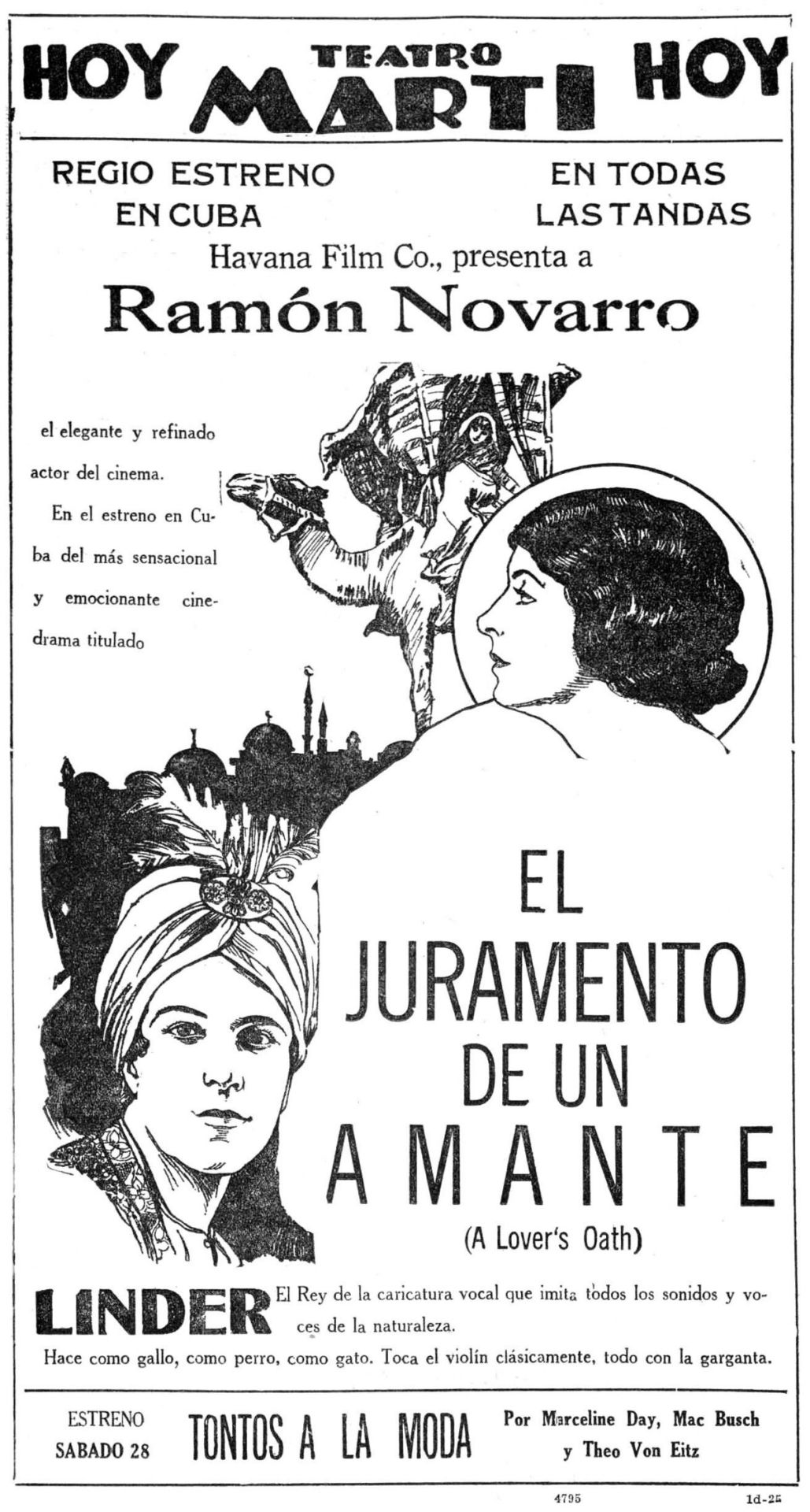
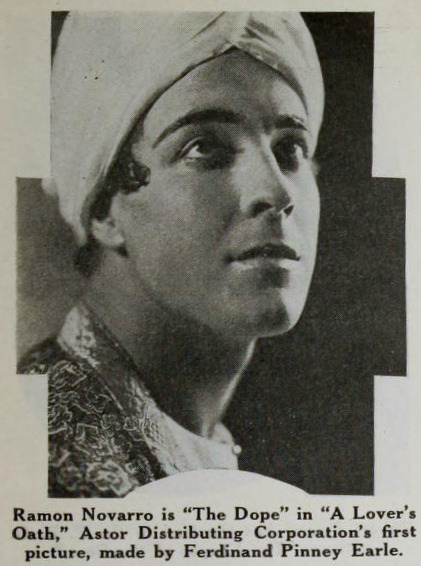
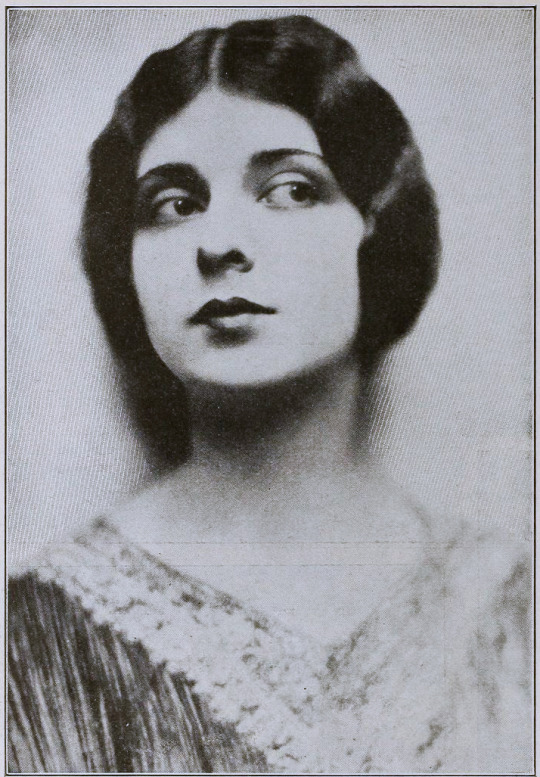
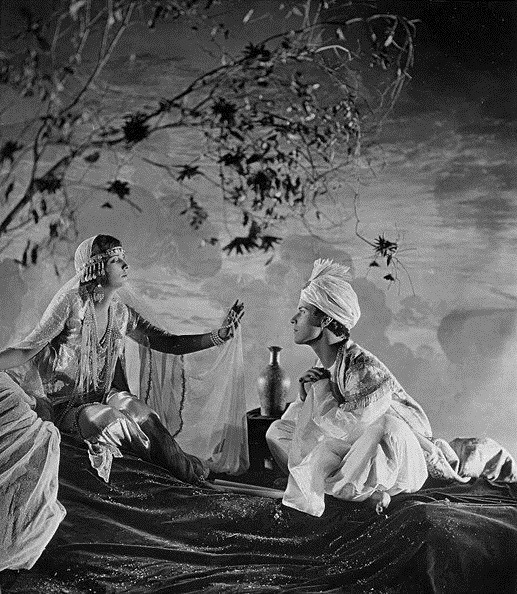
Finally I would like to highlight Ferdinand Earle’s statement to the industry, which he penned for from Camera in 14 January 1922, when his financial backers kidnapped his film to re-edit it on their terms:
MAGNA CHARTA
Until screen authors and producers obtain a charter specifying and guaranteeing their privileges and rights, the great slaughter of unprotected motion picture dramas will go merrily on.
Some of us who are half artists and half fighters and who are ready to expend ninety per cent of our energy in order to win the freedom to devote the remaining ten per cent to creative work on the screen, manage to bring to birth a piteous, half-starved art progeny.
The creative artist today labors without the stimulus of a public eager for his product, labors without the artistic momentum that fires the artist’s imagination and spurs his efforts as in any great art era.
Nowadays the taint of commercialism infects the seven arts, and the art pioneer meets with constant petty worries and handicaps.
Only once in a blue moon, in this matter-of-fact, dollar-wise age can the believer in better pictures hope to participate in a truely [sic] artistic treat.
In the seven years I have devoted to the screen, I have witnessed many splendid photodramas ruined by intruding upstarts and stubborn imbeciles. And I determined not to launch the production of my Opus No. 1 until I had adequately protected myself against all the usual evils of the way, especially as I was to make an entirely new type of picture.
In order that my film verison [sic] of the Rubaiyat of Omar Khayyam might be produced under ideal conditions and safeguarded from intolerable interferences and outside worries, I entered into a contract with the Rubaiyat, Inc., that made me not only president of the corporation and on the board of directors, but which set forth that I was to be author, production manager, director, cutter and film editor as well as art director, and that no charge could be made against the production without my written consent, and that my word was to be final on all matters of production. The late George Loane Tucker helped my attorney word the contract, which read like a splendid document.
Alas, I am now told that only by keeping title to a production until it is declared by yourself to be completed is it safe for a scenario writer, an actor or a director, who is supposedly making his own productions, to contract with a corporation; otherwise he is merely the servant of that corporation, subject at any moment to discharge, with the dubious redress of a suit for damages that can with difficulty be estimated and proven.
Can there be any hope of better pictures as long as contracts and copyrights are no protection against financial brigands and bullies?
We have scarcely emerged from barbarism, for contracts, solemnly drawn up between human beings, in which the purposes are set forth in the King’s plainest English, serve only as hurdles over which justice-mocking financiers and their nimble attorneys travel with impunity, riding rough shod over the author or artist who cannot support a legal army to defend his rights. The phrase is passed about that no contract is invioliable [sic]—and yet we think we have reached a state of civilization!
The suit begun by my attorneys in the federal courts to prevent the present hashed and incomplete version of my story from being released and exhibited, may be of interest to screen writers. For the whole struggle revolves not in the slightest degree around the sanctity of the contract, but centers around the federal copyright of my story which I never transferred in writing otherwise, and which is being brazenly ignored.
Imagine my production without pictorial titles: and imagine “The Rubaiyat” with a spoken title as follows, “That bird is getting to talk too much!”—beside some of the immortal quatrains of Fitzgerald!
One weapon, fortunately, remains for the militant art creator, when all is gone save his dignity and his sense of humor; and that is the rapier blade of ridicule, that can send lumbering to his retreat the most brutal and elephant-hided lord of finance.
How edifying—the tableau of the man of millions playing legal pranks upon men such as Charles Wakefield Cadman, Edward S. Curtis and myself and others who were associated in the bloody venture of picturizing the Rubaiyat! It has been gratifying to find the press of the whole country ready to champion the artist’s cause.
When the artist forges his plowshare into a sword, so to speak, he does not always put up a mean fight.
What publisher would dare to rewrite a sonnet of John Keats or alter one chord of a Chopin ballade?
Creative art of a high order will become possible on the screen only when the rights of established, independent screen producers, such as Rex Ingram and Maurice Tourneur, are no longer interferred with and their work no longer mutilated or changed or added to by vandal hands. And art dramas, conceived and executed by masters of screen craft, cannot be turned out like sausages made by factory hands. A flavor of individuality and distinction of style cannot be preserved in machine-made melodramas—a drama that is passed from hand to hand and concocted by patchworkers and tinkerers.
A thousand times no! For it will always be cousin to the sausage, and be like all other—sausages.
The scenes of a master’s drama may have a subtle pictorial continuity and a power of suggestion quite like a melody that is lost when just one note is changed. And the public is the only test of what is eternally true or false. What right have two or three people to deprive millions of art lovers of enjoying an artist’s creation as it emerged from his workshop?
“The Rubaiyat” was my first picture and produced in spite of continual and infernal interferences. It has taught me several sad lessons, which I have endeavored in the above paragraphs to pass on to some of my fellow sufferers. It is the hope that I am fighting, to a certain extent, their battle that has given me the courage to continue, and that has prompted me to write this article. May such hubbubs eventually teach or inforce a decent regard for the rights of authors and directors and tend to make the existence of screen artisans more secure and soothing to the nerves.
FERDINAND EARLE.
---
☕Appreciate my work? Buy me a coffee! ☕
Transcribed Sources & Annotations over on the WMM Blog!
See the Timeline for Ferdinand P. Earle's Rubaiyat Adaptation
#1920s#1923#1925#omar khayyam#ferdinand pinney earle#ramon novarro#independent film#american film#silent cinema#silent era#silent film#classic cinema#classic movies#classic film#film history#history#Charles Wakefield Cadman#cinematography#The Rubaiyat#cinema#film#lost film
41 notes
·
View notes
Text
Time Travel Question 30: Murder and
Disappearance Edition III
Given that Roanoke and the Dyatlov Pass Incident are credibly solved, though not 100% provable, I'm leaving them out in favor of things more mysterious. I almost left out Amelia Earhart from a previous edition, but the evidence there is sketchier.
No, I'm not doing JFK. I refuse.
Please add new suggestions below, if you have them, for future consideration.
#Lake Bodom Murders#Finland#Time Travel#Murder#Serial Killers#Ludwig II of Bavaria#Queer History#The Yuba County Five#Disappearances#Bowraville Murders#Australian History#King Erik V Klipping#Danish History#Hamlin#German History#Middle Ages#US history#European History#The Hinterkaifeck Murders#Bavaria#The Isdal Woman#Abe Reles#Organized Crime#Lizzie Borden#Edgar Allen Poe#Ronald Joseph DeFeo Jr.
41 notes
·
View notes
Text
Notable Deaths in 2023 . . .

Tom Smothers (February 2, 1937-December 26, 2023)
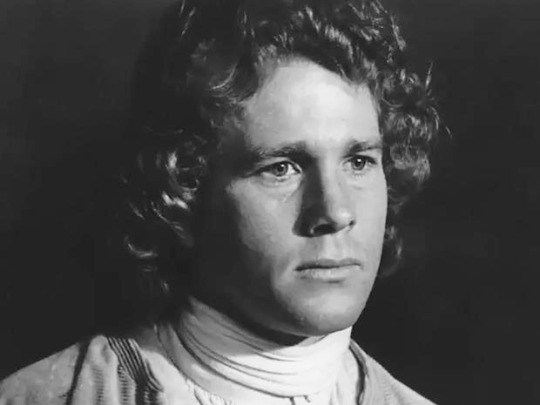
Ryan O'Neal (April 20, 1941-December 8, 2023)
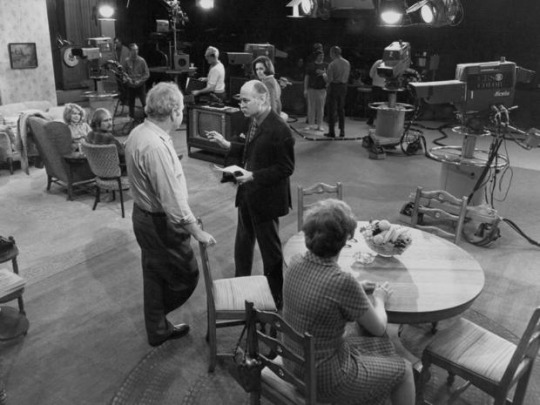
Legendary TV producer Norman Lear (July 27, 1922-December 5, 2023)

Sandra Day O'Connor (March 26, 1930-December 1, 2023)

Former first lady Rosalynn Carter (August 18, 1927-November 19, 2023)

Pulitzer Prize-winning composer David Del Tredici (March 16, 1937-November 18, 2023)

A U.S. Air Force fighter pilot and instructor at West Point, astronaut Frank Borman (March 14, 1928-November 7, 2023)

College basketball coach Bob Knight (October 25, 1940-November 1, 2023)

As Chandler Bing, a quick-witted, sarcastic member of the coterie of "Friends," Matthew Perry (August 19, 1969-October 28, 2023)
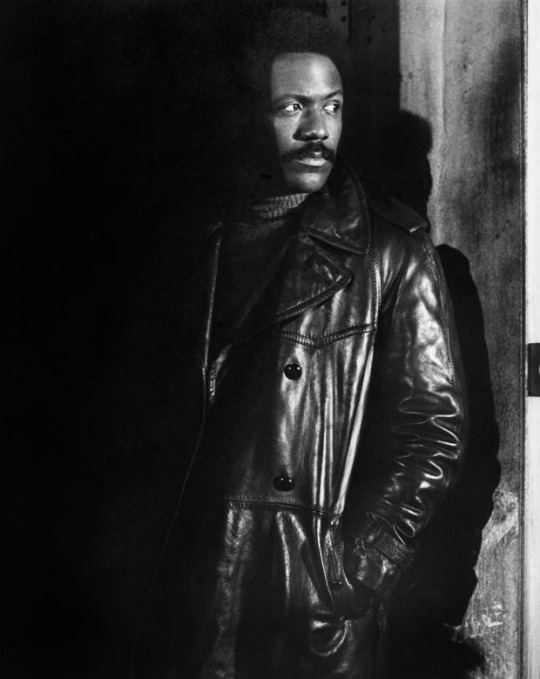
As the star of the trailblazing 1971 action movie "Shaft," Richard Roundtree (July 9, 1942-October 24, 2023)
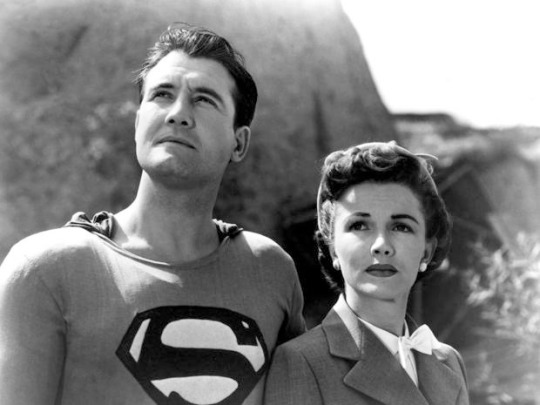
Actress Phyllis Coates (January 15, 1927-October 11, 2023) "Adventures of Superman."
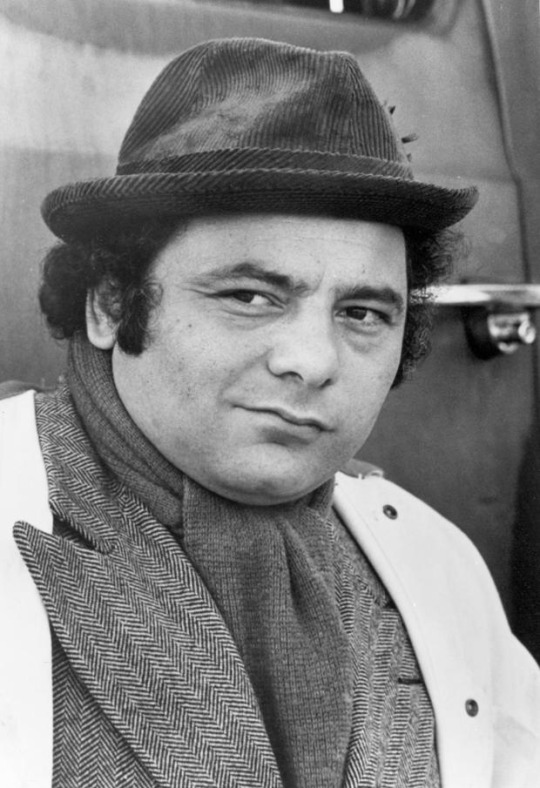
Character actor Burt Young (April 30, 1940-October 8, 2023)

Irish-English actor Sir Michael Gambon (October 19, 1940-September 27, 2023)
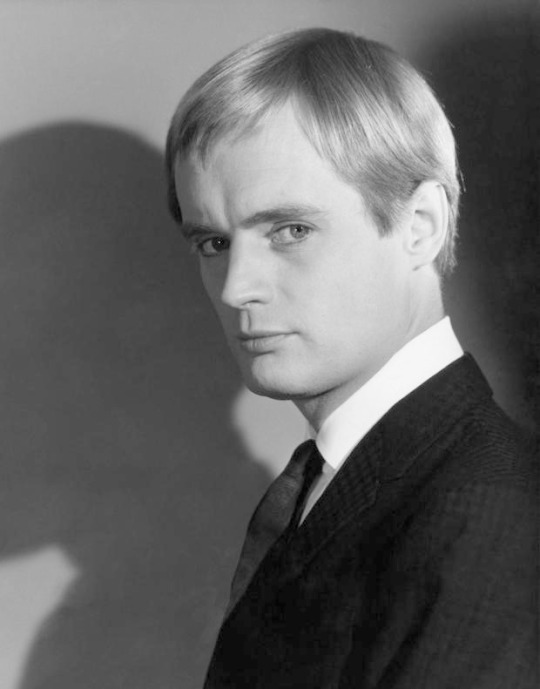
Actor David McCallum (September 19, 1933-September 25, 2023)

The songs of Jimmy Buffett (December 25, 1946-September 1, 2023)

Singer Tina Turner (November 26, 1939-May 24, 2023)

Canadian singer-songwriter Gordon Lightfoot (November 17, 1938-May 1, 2023)
. . . And MANY More...I just couldn't post ALL of them.
NOTHING Last Forever...! (Remember That)
29 notes
·
View notes
Text
THIS DAY IN GAY HISTORY
based on: The White Crane Institute's 'Gay Wisdom', Gay Birthdays, Gay For Today, Famous GLBT, glbt-Gay Encylopedia, Today in Gay History, Wikipedia, and more … March 26


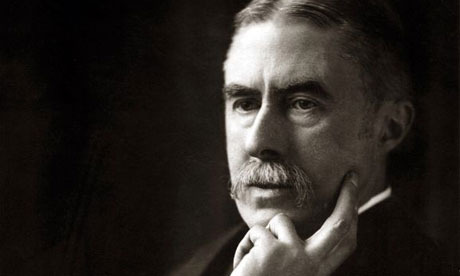
1859 – A.E. Housman English scholar/poet, born, (d.1936); Alfred Edward Housman was a classical scholar and poet of note. He was once viewed as a great grey presence, divorced from the flesh and married to the mind.
To mainstream readers of poetry, A.E. Housman was the much admired of author of two best-selling collections, A Shropshire Lad (1896) and Last Poems (1922), whose texts were taken as universal statements. But for all its universality, Housman's poetry is deeply rooted in homosexual experience and consciousness, and even reflects gay history.
Those 'in the know' were always aware of this, for despite being forced to write in code, Housman was reasonably bold, and it would appear from some of his poems and from the work of his brother Laurence, his literary executor and also gay, that Housman wrote the bulk of his work for a secret and oppressed homosexual readership.
Housman is unusual in that he not only wrote a large amount of private work of a more open nature, but it was not destroyed. In fact, Laurence assembled two further volumes from his brother's surviving manuscripts - More Poems (1936) and Additional Poems (1937).
The inspiration for Housman's poetry comes from two sources - the unrequited love (and lifelong friendship) he had for a fellow student named Moses Jackson; he also had a brief affair and long friendship with Moses' brother, Adalbert. The second driving force behind his work was his anger at the treatment of homosexuals, particularly the public hostility generated by the Wilde trial, and the ensuing need for secrecy that followed for decades. Housman wrote as openly as he could.
However, for all the secrecy, it seems that Housman was not exactly a virgin when it came to man on man sex. We now learn that the scholarly Cambridge don used to make merry with a string of Italian gigolos supplied by his friend Horatio Brown, and was as well a regular patron of the male brothels in Paris. But it was not for many years that any of this became public.
In 1942 A.E. Houseman's brother, Laurence Housman, deposited an essay entitled "A. E. Housman's 'De Amicitia'" in the British Library, with the proviso that it was not to be published for 25 years. The essay discussed A. E. Housman's homosexuality and his love for Moses Jackson. Given the conservative nature of the times it is not surprising that there was no unambiguous autobiographical statement about Housman's sexuality during his life.
It is certainly present in A Shropshire Lad, for instance, #30:
'Others, I am not the first /have willed more mischief than they durst', in which 'Fear contended with desire', and in #44, in which he commends the suicide, where 'Yours was not an ill for mending'... for 'Men may come to worse than dust', their 'Souls undone, undoing others': he has died 'Undishonoured, clear of danger, / Clean of guilt..'.
More Poems was more explicit, as in #31 about Jackson 'Because I liked you better / Than suits a man to say', in which his feelings of love break his friendship, and must be carried silently to the grave.
His poem 'Oh who is that young sinner with the handcuffs on his wrists?', written after the trial of Oscar Wilde, addressed more general societal injustice towards homosexuality. In the poem the prisoner is suffering 'for the colour of his hair', a natural, given attribute which - in a clearly coded reference to homosexuality - is reviled as 'nameless and abominable' (recalling the legal phrase 'peccatum horribile, inter christianos non nominandum', 'the horrible sin, not to be named amongst Christians').
So if you read all those poems in A Shropshire Lad that talk of 'lads', 'fellows' and 'comrades' , don't be under any illusions what he was really talking about...The street sounds to the soldiers' tread,
And out we troop to see:
A single redcoat turns his head,
He turns and looks at me.
My man, from sky to sky's so far,
We never crossed before;
Such leagues apart the world's ends are,
We're like to meet no more;
What thoughts at heart have you and I
We cannot stop to tell;
But dead or living, drunk or dry,
Soldier, I wish you well.
- from A Shropshire Lad


1892 – Iowa outlaws sodomy, leaving it legal only in the District of Columbia. The law states that it will become effective upon publication in the two Des Moines newspapers, giving the papers a veto power over the law if they fail to print it. Both print it without delay.


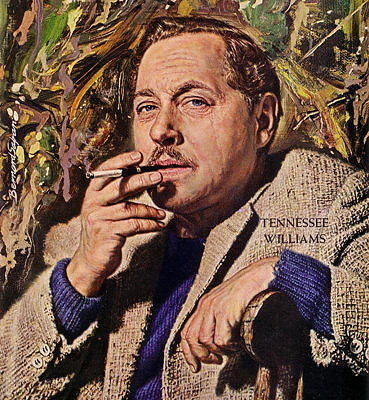
1911 – Tennessee Williams, American dramatist (d.1983); born Thomas Lanier Williams III, Tennessee Williams, was a major American playwright of the 20th century who received many of the top theatrical awards for his work. He moved to New Orleans in 1939 and changed his name to "Tennessee," the state of his father's birth because he thought "Thomas Lanier Williams" sounded "like it might belong to the sort of writer who turns out sonnet sequences to Spring,"
Tennessee won the Pulitzer Prize for Drama for A Streetcar Named Desire in 1948 and for Cat On A Hot Tin Roof in 1955. In addition, The Glass Menagerie (1945) and The Night of the Iguana (1961) received New York Drama Critics' Circle Awards. His 1952 play The Rose Tattoo —dedicated to his lover, Frank Merlo— received the Tony Award for Best Play.
Conflicted over his own sexuality, Tennessee Williams wrote directly about homosexuality in his short stories and poetry, but only rarely in his plays.
In Cat on a Hot Tin Roof , Brick, a former football star, is drinking himself to death, following in the footsteps of his beloved friend, Skipper, who was sexually attracted to him, and his wife wants their marriage to have, in addition to sex, the honesty of a friendship. Hung up on his friend's admission of desire, Brick has shut out his wife sexually and emotionally. Unable to endure any kind of intimacy, Brick drinks himself into detachment, denying his own sexuality, keeping it a deep, dirty secret.
Williams's own sexuality was an open secret he neither publicly confirmed nor denied until the post-Stonewall era when gay critics took him to task for not coming out, which he did in a series of public utterances, his Memoirs (1975), self-portraits in some of the later plays, and the novel, Moise and the World of Reason (1975), all of which document, often pathetically, Williams's sense of himself as a gay man.
Williams is nothing less than the stuff of theater history, on and off the stage. If at times Williams appeared to be his own worst enemy, he long lived with the pressure of having been the first publicly-known gay celebrity in America. It cannot have been much fun to see his great Blanche DuBois savaged by homophobic critics obsessed with proving that gay men know nothing about straight love. His other heroines have been similarly violated. If all writers pay a price for fame, Williams, being open and out as a gay man, paid more than his fair share.
Williams's relationship with Frank Merlo, a second generation Sicilian American who had served in the U.S. Navy in World War II, lasted from 1947 until Merlo's death from cancer in 1963. With that stability, Williams created his most enduring works. Merlo provided balance to many of Williams' frequent bouts with depression and the fear that, like his sister Rose, he would go insane.

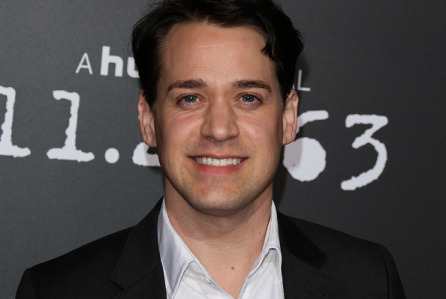
1973 – T.R. Knight, American actor, born; An Emmy Award-nominated and Screen Actors Guild Award-winning American actor , Knight's most high-profile role to date is his role as Dr. George O'Malley on ABC's top-rated, hit medical soap opera Grey's Anatomy.
Knight was born in Minneapolis, Minnesota. After finishing high school , Knight enrolled at the University of Minnesota for a brief period of time. He dropped out and soon landed leading roles at the Guthrie Theater. Knight moved to New York City and has appeared on Broadway; his most notable role was playing opposite Patti LuPone in the 2001 revival of Noises Off.Rumors over Knight's sexuality gained momentum when news reports surfaced in October 2006 that Grey's Anatomy co-stars Patrick Dempsey and Isaiah Washington were involved in an argument during which, Knight and others allege, Washington used an anti-gay slur directed at an unnamed co-star. Washington later apologized, stating "I sincerely regret my actions and the unfortunate use of words during the recent incident on-set".
Knight, who is gay, did not disclose his sexuality to the public until October 19, 2006—after the kerfuffle—when he released a statement through People magazine stating, in part, "I guess there have been a few questions about my sexuality, and I'd like to quiet any unnecessary rumors that may be out there. While I prefer to keep my personal life private, I hope the fact that I'm Gay isn't the most interesting part of me."
Knight appeared on The Ellen DeGeneres Show later the same month and stated that Washington in fact had referred to him as a faggot on the Grey's Anatomy set on October 9, 2006.
In June 2007, Knight's role was secured for an additional season of Grey's Anatomy, while Isaiah Washington's contract was not renewed. Knight was written out of Grey's Anatomy in 2008 when George O'Malley was killed off in a dramatic severe trauma storyline. Producers claim that Knight asked to be released from his contract but he has maintained that he left because of 'trust issues' with the show's creator, Shonda Rimes.
Since Grey's Anatomy, Knight's career has mostly been in theatre. Knight starred in a production of the musical Parade, opening October 4, 2009, at the Mark Taper Forum in Los Angeles as Leo Frank. Knight returned to Broadway in David Mamet's A Life in the Theatre in 2010, where he played the role of John, opposite Patrick Stewart.
On October 5, 2013, Knight married his boyfriend of three years, Patrick Leahy, in Hudson, New York.
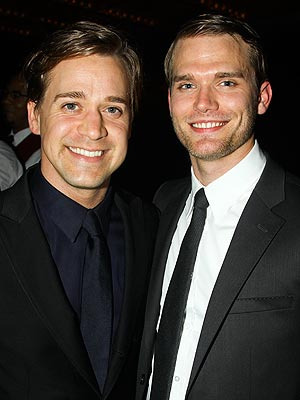
Knight and husband Patrick Leahy


1975 – After the local district attorney’s office rules that there are no county laws preventing two people of the same-sex from getting married, Boulder, Colorado county clerk Clela Rorex issues a marriage license to two gay men, Dave McCord and Dave Zamora,. It is the first same-sex marriage license issued in the United States. She says in a statement, "I don’t profess to be knowledgeable about homosexuality or even understand it, but it’s not my business why people get married. No minority should be discriminated against."


1985 – Jonathan Groff is an American who portrayed Jesse St. James in the American television series Glee.
Jonathan was raised in Lancaster, PA as a Methodist. He first decided he wanted to work in show-business when he was 10 years old and saw a production of Annie Get Your Gun with his school. Before deciding he wanted to be an actor, Jonathan aspired to be a professional trumpet player. Groff came out as gay in October 2009 during the National Equality March in Washington.
He first appeared on Glee in the episode Hell-O and appeared on the show for the rest of the season. He returned to Glee in season two. Groff also returned later in season 3, as coach of the New Directions' biggest threat; Vocal Adrenaline.
Groff, along with other openly gay actors (including Sean Hayes and Neil Patrick Harris), were the target of a highly controversial April 2010 Newsweek article by Ramin Setoodeh that argued gay actors are not convincing playing straight characters. The article created a huge media backlash with many public figures (including Groff and Hayes' co-star, Kristin Chenoweth) decrying it as homophobic and defending Hayes's, Harris's, and Groff's performances as straight characters.
In 2014 he won the lead role in Looking, a sort of gay version of Sex and the City, with less glamour and more grit, set in San Francisco. Looking ran for two seasons.
He had been in a relationship with Zachary Quinto for quite a while, but Quinto "felt that they couldn't take their romance public - until now." In July 2013, it was reported that the two had broken up.
An advocate for the LGBT community, Groff was listed in Out Magazine's OUT100 as one of the 100 most compelling LGBT people in 2013 and again in 2014, this time alongside Murray Bartlett and Russell Tovey, his fellow out co-stars in Looking. Also in 2014, he was named a Grand Marshal of the New York City Pride Parade. In April 2015, he was honored by the Point Foundation with the Point Horizon Award, saying Groff is "a proud member of the LGBTQ community and uses his position to speak about both the challenges and opportunities young LGBTQ people face in society. As an actor and an advocate, Groff is an inspiration to the next generation of LGBTQ leaders." In December 2015, he was honored by the Equality Pennsylvania organization with the Bayard Rustin Award. According to the organization, Groff "is a highly visible role model and activist for the LGBT Community. And in this role, every day, he brings home the strong and resonant message that LGBT people can do anything, be anything, and can live lives of value and worth."


1998 – Omar Ayuso is a Spanish actor. He is best known for his role as Omar Shanaa on the television series Elite (2018–present).
Ayuso was born in Madrid and raised in Manzanares el Real. After seeing Bad Education as a child, he became interested in becoming an actor or filmmaker. Ayuso studies audiovisual communication at the Charles III University of Madrid.
In 2018, Ayuso was cast in the Spanish web television series Elite as Omar Shanaa, a closeted gay Muslim who develops a relationship with Ander Muñoz who is played by Arón Piper. In preparation for the role, Ayuso worked for two months with director Ramón Salazar to absorb his character's role.
In 2019, Ayuso starred in three short films including Maras’ de Salvador Calvo and Ráfagas de vida salvaje by Jorge Cantos and Disseminare by Jools Beardon.
In January 2020, Ayuso was featured in the music video of "Juro Que" by singer songwriter Rosalía.
Ayuso plays the character, David, in the upcoming film, 8 Años, a gay drama where he reflects on an eight-year relationship.
Ayuso and Piper's onscreen relationship, coined "Omander", and their offscreen friendship has generated a global following. As of June 2020, he had over four million followers on social media. The role has boosted LGBT visibility although Ayuso resists the notion that he serves as a role model. As a gay man, Ayuso has been the subject of homophobic commentary. He believes the widespread support for his onscreen relationship with Piper is due to it being easier for homophobic people to accept gays in fiction rather than in real life.In 2019, Ayuso moved into an apartment in downtown Madrid. He has a tattoo of a flame and an eye on his hand inspired by artist Ricardo Cavolo. Ayuso is gay. He has stated in interviews that he is proud of his generation's social progress on topics including feminism, LGBT rights, and efforts against racism. As of March 2020, Ayuso is in a relationship with artist Alonso Díaz.

Today's Gay Wisdom:
Tennesee Williams
[{(o)}]|[{(o)}]|[{(o)}]|[{(o)}]| [{(o)}]|[{(o)}]
Most of the confidence which I appear to feel, especially when influenced by noon wine, is only a pretense. - Tennessee Williams
Why you're not crippled, you just have a little defect — hardly noticeable, even! When people have some slight disadvantage like that, they cultivate other things to make up for it - develop charm - and vivacity - and - charm! - The Glass Menagerie (1944)
You are the only young man that I know of who ignores the fact that the future becomes the present, the present the past and the past turns into everlasting regret if you don't plan for it! - The Glass Menagerie (1944)
I wish you were my sister. I'd teach you to have some confidence in yourself. The different people are not like other people, but being different is nothing to be ashamed of. Because other people are not such wonderful people. They're one hundred times one thousand. You're one times one! They walk all over the earth. You just stay here. They're common as - weeds, but - you - well, you're - Blue Roses! - The Glass Menagerie (1944)
But there's one thing you can't buy in a Europe firesale or in any other market on earth. And that's your life. You can't buy back your life when it's finished... The human animal is a beast that eventually has to die. And if he's got money, he buys and he buys and he buys. The reason why he buys everything he can is because his crazy hope is one of the things he buys will be life everlasting - which it never can be. - Cat on a Hot Tin Roof


15 notes
·
View notes
Text

Historical Flag Wars Round 1
The first round of the Historical Flag Wars starts today! Which flag are you rooting for?
Here are the brackets for Round 1:
1. Republic of Rotuma vs. Sultanate of Sulu
2. Peru (May 1822) vs. Kingdom of Amber
3. Green Mountain Boys vs. Taipei, Taiwan (1981-2010)
4. Kingdom of Laos vs. Kingdom of Abemama
5. State of Deseret vs. Guilford Courthouse Flag
6. Mohanpur State vs. Attributed flag of Blackbeard
7. Nepal (1856-1930) vs. Empire of Brazil
8. Burma (1943-1945) vs. Latvian Soviet Socialist Republic
9. Wiphala of Tupac Katari vs. Mamluk Sultunate (attributed)
10. Islands of Refreshment vs. Imperial State of Iran
11. Union Mark of Norway and Sweden vs. Kingdom of Prussia (1892-1918)
12. Jewish Combat Organization vs. Kingdom of Kandy
13. Kingdom of Manipur (1891–1907) vs. International Revolutionary People's Guerrilla Forces
14. Venice (1922-1977, de facto) vs. International Brigades
15. Sultanate of Zanzibar (1963–1964) vs. State of Muskogee
16. Maine (1901-1909) vs. Taymyr Autonomous Okrug
17. Tibet vs. Dutchy of Brittany
18. Ryukyu Kingdom vs. Byelorussian Soviet Socialist Republic
19. Duchy of Milan vs. Republic of Yucatán
20. People’s Republic of Korea vs. Halliste Parish, Estonia
21. Jeju Province (1969–2009) vs. Republic of China (1912–1928)
22. House flag of Nedlloyd vs. Historical Mapuche Flag
23. Kingdom of Ireland vs. Starry Plough Flag
24. Royal standard of the Joseon Dynasty vs. Flag of David IV the Builder
25. Army of the Three Guarantees vs. Raven Banner
26. Iraq (1959–1963) vs. Republic of Formosa
27. Principality of Moldavia vs. Eureka Flag
28. Kingdom of Sikkim vs. Republic of Anguilla
29. Republic of the Rif vs. West Indies Federation
30. Bedford Flag vs. Ethiopian Empire
31. Rägavere Parish, Estonia vs. Unidentified Flag of the Kingdom of Benin
32. Comecon vs. Naval flag of the Duchy of Courland
30 notes
·
View notes
Text
books finished (not necessarily started) this year
only marking ‘strongly recommend’ (👍) and ‘don’t recommend’ (❌️). well and molière is molière lol
The Fascist Revolution: Toward a General Theory of Fascism by George Mosse (January 2) 👍
The Ba‘th and the Creation of Modern Syria by David Roberts (January 19)
The Occult Roots of Nazism: Secret Aryan Cults and their Influence on Nazi Ideology by Nicholas Goodrick-Clarke (February 20) 👍
The Brown Plague: Travels in Late Weimar and Early Nazi Germany by Daniel Guérin (March 6) 👍
Fascism in Brazil: From Integralism to Bolsonarism by Leandro Pereira Gonçalves and Odilon Caldeira Neto (March 22)
Iraqi Arab Nationalism: Authoritarian, Totalitarian, and Pro-Fascist Inclinations, 1932–1941 by Peter Wien (April 5)
Bunch of Thoughts by M.S. Golwalkar (April 11) ❌️
Hebrew Fascism in Palestine, 1922–1942 by Dan Tamir (April 18)
Latin American Dictatorships in the Era of Fascism: The Corporatist Wave by António Costa Pinto (May 2)
L’École des femmes by Molière (May 17)
A History of Fascism, 1914–1945 by Stanley Payne (May 30) 👍
Anarcho-Fascism: Nature Reborn by Jonas Nilsson (June 20) (extremely doesn’t count, basically a pamphlet) ❌️
French Colonial Fascism: The Extreme Right in Algeria, 1919–1939 by Samuel Kalman (August 23)
The Upside of Stress: Why Stress Is Good for You, and How To Get Good at It by Kelly McGonigal (October 11)
Fascism in Spain, 1923–1977 by Stanley Payne (October 27) 👍
Inside Latin America by John Gunther (November 10)
It Can’t Happen Here by Sinclair Lewis (November 24)
i have ambitions of finishing wynot’s polish politics in transition over the weekend but that’s probably not going to happen
18 notes
·
View notes
Photo







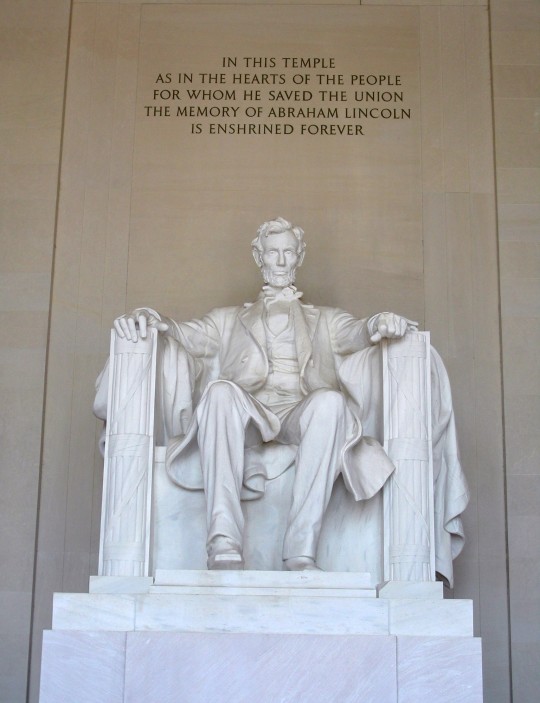


The Lincoln Memorial was dedicated in Washington, D.C. on May 30, 1922.
#Lincoln Memorial#Henry Bacon#Daniel Chester French#dedicated#travel#30 May 1922#100th anniversary#US history#Gettysburg Address#vacation#Washington DC#summer 2009#original photography#cityscape#architecture#sculpture#public art#Abraham Lincoln#16th US President#National Mall#Reflecting Pool#Washington Monument#US Capitol#inscription
2 notes
·
View notes
Text
Garlic!
We’ve got an old-ish French cookbook...
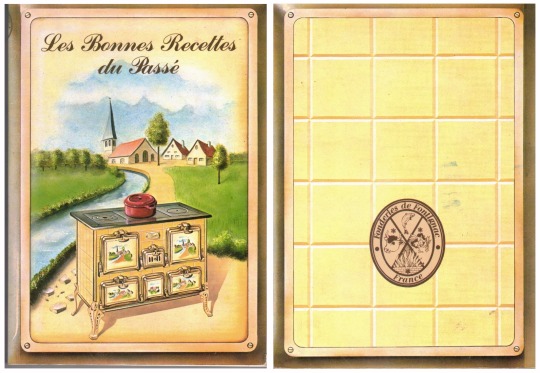
...that arrived about 30 years ago with some enamelled cast-iron cookware, now showing their age a bit but still going strong (winks at self in mirror...)

The recipes are all home-style - often farmhouse-style - rather than Haute Cuisine, and IMO all the more appealing for it.
With Hallowe’en just round the corner, here are a couple of soups with a lavish use of one particular ingredient to keep the vampires at bay.

Garlic Soup
Ingredients:
5 heads (!) of garlic
some oil for frying
2 potatoes
5 thick slices of bread
salt & pepper.
Method:
Peel the garlic cloves and put them into a pot with some oil.
Fry until lightly coloured.
Peel the potatoes, cut them into small pieces and add to the pot along with hot water and the bread. (Mme David doesn’t specify how much water, so I suppose it’s cook’s choice to make thick soup or thin.)
Simmer for 1/4 hour then put through a food mill / blender / processor or use a stick-mixer.
I’d dress each bowlful with a swirl of cream and a sprinkle of snipped chives; maybe also a few drops of Tabasco, some bread croutons and bacon lardons.
But that’s just me.
*****

Garlic soup au “P’tit quinquin”
This means “little kiddie” in Picardy dialect. It’s also a brand of lemonade, but I have no idea how it’s associated with soup. Since the slang name for fried choux doughnuts / beignets is “pets de nonne” (nun’s farts) your guess may be as good as mine. :->
*****
An old Northern saying goes: "if men knew what garlic is worth, they would plant acres of it.” (journaux = an old measure of area)
Ingredients:
3 litres of water
30 (!) garlic cloves
2 cloves
4 sage leaves
salt & pepper
bread
butter
grated cheese
Method:
Put the water, garlic, cloves and sage leaves in a saucepan.
Season with salt and pepper and simmer for 15 to 18 minutes.
Pass through a mill / blender etc..
Pour into a soup tureen lined with slices of bread which have been previously buttered, sprinkled with grated cheese and put in a hot oven (or under a grill / broiler).
Once again I’d add things: in this case the presence of cheese suggests topping off with onion rings either crunchy or caramelised soft and very brown, and the cloves and sage would be enhanced by a dusting of quatre-épices (4-spice mix).
But again, that’s just me. :-)
(Somewhat later @dduane plans to try a recipe from 1922 called “Goose done Vise-style” - braised with pot-au-feu vegetables, then cut up, dipped with egg and flour, fried golden in butter and served alongside the veggies with a nutmeg and garlic cream sauce. The recipes in this little book suggest that French rural-regional cooking is serious stuff. Yum...)
91 notes
·
View notes
Text
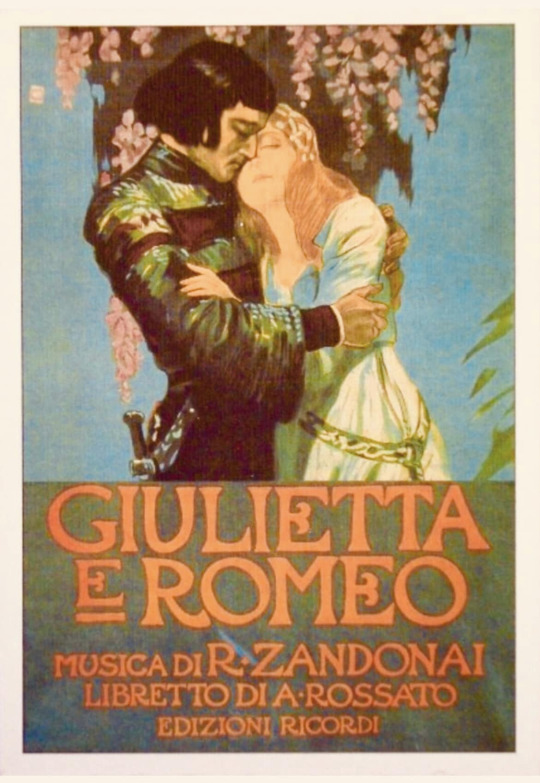
May 30. 1883 the Italian Composer and Conductor was Riccardo Zandonai born.
His operas are not so often to find in the Operahouses. Here we see a antique postcard from 1922. Take a look on his biography.
#opera#classical music#music history#bel canto#composer#classical composer#aria#classical studies#Conductor#Riccardo Zandonai#Zandonai#classical history#opera history#classical musician#classical musicians#musician#musicians#chest voice#classical#historian of music#history#music
22 notes
·
View notes
Note
In what years were Henry and Gordon born (in human form, I mean)?
then, if Elizabeth was born in 1965 and in 1965 the human form of Henry and Gordon were respectively 32 and 30 years old, we can deduce that Henry in my AU was hypothetically born in 1933, while Gordon in 1935. (obviously I'm talking about the years in human form, it was a bit bad if I assumed that Henry was like 46 years old, I don't know I imagine him quite "young" when he gives birth to Elizabeth, and also Gordon.)
so from engine they were built in 1919 and 1922, but in human would hypothetically be from 1933 and 1935. for the birthday dates I went a bit by sensations. Henry's birthday in my AU is May 3rd, and Gordon's is August 17th. Maybe it's my feeling, but I see Henry more in May because usually in May it's full spring, and you know all the things about nature that Henry likes. while Gordon, I swear, I see him very well as the tanned and fit guy who has his birthday at the seaside in the summer. obviously it's my AU, so it's my thoughts. you can think differently obviously.
7 notes
·
View notes
Text

Pomerantsev K. I. "Mongolia" 1931.
Oil on canvas
Konstantin Innokentyevich Pomerantsev (March 13 [30], 1884, Krasnoyarsk - May 21, 1945, Kursk) - Russian and Soviet painter, sculptor, architect. Pomerantsev came from an official's family. In 1893-1897 he studied at the Krasnoyarsk Men's Gymnasium. In 1900, the Pomerantsev family moved to the Verkholensky district of the Irkutsk province, but after the death of his father in 1906, the whole large family moved to Irkutsk, where Pomerantsev, starting in 1902, studied at the Irkutsk Mining School, from which he graduated in 1907. In 1906-1907 he studied in the classes of drawing and painting A. F. Lytnev, and in 1908-1910 Pomerantsev studied painting in Moscow at the art school F. I. Rerberg and at the same time he took sculpture lessons from A. S. Golubkina. In 1910, Pomerantsev returned to Irkutsk and joined the Control of the Trans-Baikal Railway as an assistant controller, where he remained until 1920. Pomerantsev became the founder (in 1910) and head of the Irkutsk Society of Artists, which he headed until 1923 (when the society was reorganized). In 1920-1925 he worked first as the 2nd, then the 1st curator of the artistic and historical department (picture gallery) of the regional museum. He taught in the art studio at the Political Department of the 5th Army (1920-1922). In 1920-1923 he headed the Irkutsk Society of Artists, until in 1923 it was liquidated as a result of the reorganization of creative associations into a single union. In January 1920, after the victory over the White Army, Pomerantsev led a team of artists to decorate the city for the solemn meeting of units of the 5th Army, which took place on March 10, 1920. In 1926, Pomerantsev was invited by the Mongolian government to Ulaanbaatar to decorate the Mongolian capital, in particular to create a monument to Sukhe-Bator, which was installed on the central square of Ulaanbaatar in 1930, as well as to create a museum of the Mongolian Revolution. In total, Pomerantsev lived in Mongolia for 13 years. More than 350 paintings, sketches, drawings, sketches of Pomerantsev are stored in the Mongolian Theater Museum (in the city of Ulaanbaatar).
Art Molotov
3 notes
·
View notes
Text
irl bsd authors
i haven't found a list of irl bsd authors listed from oldest to most recent so i decided to do that. multiple lists for date of birth, death, and publication of the work their ability is based on (if applicable) + fun stuff at the end
birth dates (oldest to most recent)
alexander pushkin - 6 Jun 1799
nathaniel hawthorne - 4 Jul 1804
edgar allan poe - 19 Jan 1809
nikolai gogol - 1 Apr 1809
ivan gonchorav - 18 Jun 1812
herman melville - 1 Aug 1819
fyodor dostoevsky - 11 Nov 1821
jules verne - 8 Feb 1828
saigiku jōno - 24 Sep 1832
louisa may alcott - 29 Nov 1832
yukichi fukuzawa - 10 Jan 1835
mark twain - 30 Nov 1835
ōchi fukuchi - 13 May 1841
paul verlaine - 30 Mar 1844
bram stoker - 8 Nov 1847
tetchō suehiro - 15 Mar 1849
arthur rimbaud - 20 Oct 1854
ryūrō hirotsu - 15 Jul 1861
ōgai mori - 17 Feb 1862
h. g. wells - 21 Sep 1866
natsume sōseki - 9 Feb 1867
kōyō ozaki - 10 Jan 1868
andré gide - 22 Nov 1869
doppo kunikida - 30 Aug 1871
katai tayama - 22 Jan 1872
ichiyō higuchi - 2 May 1872
kyōka izumi - 4 Nov 1873
lucy maud montgomery - 30 Nov 1874
akiko yosano - 7 Dec 1878
santōka taneda - 3 Dec 1882
teruko ōkura - 12 Apr 1886
jun'ichirō tanizaki - 24 Jul 1886
yumeno kyūsaku - 4 Jan 1889
h. p. lovecraft - 20 Aug 1890
agatha christie - 15 Sep 1890
ryūnosuke akutagawa - 1 Mar 1892
ranpo edogawa - 21 Oct 1894
kenji miyazawa - 27 Aug 1896
f. scott fitzgerald - 24 Sep 1896
margaret mitchell - 8 Nov 1900
motojirō kajii - 17 Feb 1901
mushitarō oguri - 14 Mar 1901
john steinbeck - 27 Feb 1902
aya kōda - 1 Sep 1904
ango sakaguchi - 20 Oct 1906
chūya nakahara - 29 Apr 1907
atsushi nakajima - 5 May 1909
osamu dazai - 19 Jun 1909
sakunosuke oda - 26 Oct 1913
michizō tachihara - 30 Jul 1914
tatsuhiko shibusawa - 8 May 1928
(ace) alan bennett - 9 May 1934
yukito ayatsuji - 23 Dec 1960
mizuki tsujimura - 29 Feb 1980
death dates (oldest to most recent)
alexander pushkin - 10 Feb 1837
edgar allan poe - 7 Oct 1849
nikolai gogol - 4 Mar 1852
nathaniel hawthorne - 19 May 1864
fyodor dostoevsky - 9 Feb 1881
louisa may alcott - 6 Mar 1888
ivan goncharov - 27 Sep 1891
herman melville - 28 Sep 1891
arthur rimbaud - 10 Nov 1891
paul verlaine - 8 Jan 1896
tetchō suehiro - 5 Feb 1896
ichiyō higuchi - 23 Nov 1896
yukichi fukuzawa - 3 Feb 1901
saigiku jōno - 24 Jan 1904
jules verne - 24 Mar 1905
kōyō ozaki - 30 Oct 1903
ōchi fukuchi - 4 Jan 1906
doppo kunikida - 23 Jun 1908
mark twain - 21 Apr 1910
bram stoker - 20 Apr 1912
natsume sōseki - 9 Dec 1916
ōgai mori - 8 Jul 1922
ryūrō hirotsu - 25 Oct 1928
ryūnosuke akutagawa - 24 Jul 1927
katai tayama - 13 May 1930
motojirō kajii - 24 Mar 1932
kenji miyazawa - 21 Sep 1933
yumeno kyūsaku - 11 Mar 1936
h. p. lovecraft - 15 Mar 1937
chūya nakahara - 22 Oct 1937
michizō tachihara - 29 Mar 1939
kyōka izumi - 7 Sep 1939
santōka taneda - 11 Oct 1940
f. scott fitzgerald - 21 Dec 1940
lucy maud montgomery - 24 Apr 1942
mushitarō oguri - 10 Feb 1946
h. g. wells - 13 Aug 1946
akiko yosano - 29 May 1942
atsushi nakajima - 4 Dec 1942
sakunosuke oda - 10 Jan 1947
osamu dazai - 13 Jun 1948
margaret mitchell - 16 Aug 1949
andré gide - 19 Feb 1951
ango sakaguchi - 17 Feb 1955
teruko ōkura - 18 Jul 1960
ranpo edogawa - 28 Jul 1965
jun'ichirō tanizaki - 30 Jul 1965
john steinbeck - 20 Dec 1968
agatha christie - 12 Jan 1976
tatsuhiko shibusawa - 5 Aug 1987
aya kōda - 31 Oct 1990
(ace) allan bennett - still alive
yukito ayatsuji - still alive
mizuki tsujimura - still alive
work (oldest to most recent)
alexander pushkin - A Feast in Time of Plague, 1830
edgar allan poe - The Murders in Rue Morgue, 1841
nikolai gogol - The Overcoat, 1842
edgar allan poe - The Black Cat, 19 Aug 1843
nathaniel hawthorne - The Scarlet Letter, 1850
herman melville - Moby-Dick, 1851
louisa may alcott - Little Women, 1858
fyodor dostoevsky - Crime and Punishment, 1866
ivan goncharov - The Precipice, 1869
yukichi fukuzawa - An Encouragement of Learning, 1872-76
jules verne - The Mysterious Island, 1875
mark twain - The Adventures of Tom Sawyer, 1876
mark twain - Adventures of Huckleberry Finn, 1884
tetchō suehiro - Plum Blossoms in the Snow, 1886
arthur rimbaud - Illuminations, 1886
saigiku jōno - Priceless Tears, 1889
ōchi fukuchi - The Mirror Lion, A Spring Diversion, Mar 1893
ryūrō hirotsu - Falling Camellia, 1894
h. g. wells - The Time Machine, 1895
kōyō ozaki - The Golden Demon, 1897
bram stoker - Dracula, 1897 (his ability has not been named, but c’mon, vampires)
akiko yosano - Thou Shall Not Die, 1903
natsume sōseki - I Am a Cat, 1905-06
katai tayama - Futon, 1907
lucy maud montgomery - Anne of Green Gables, 1908
ōgai mori - Vita Sexualis, 1909
andré gide - Strait is the Gate, 1909
kyōka izumi - Demon Pond, 1913
ryūnosuke akutagawa - Rashomon, 1915
motojirō kajii - Lemon, 1924
f. scott fitzgerald - The Great Gatsby, 1925
kenji miyazawa - Be not Defeated by the Rain, 3 Nov 1931
santōka taneda - Self-Derision, 8 Jan 1932
mushitarō oguri - Perfect Crime, 1933
chūya nakahara - This Tainted Sorrow, 1934
yumeno kyūsaku - Dogra Magra, 1935
margaret mitchell - Gone With the Wind, 1936
john steinbeck - The Grapes of Wrath, 1939
agatha christie - And Then There Were None, 6 Nov 1939
atsushi nakajima - The Moon Over the Mountain, Feb 1942
jun'ichirō tanizaki - The Makioka Sisters, 1943-48
ango sakaguchi - Discourse on Decadence, 1946
teruko ōkura - Gasp of the Soul, 1947
osamu dazai - No Longer Human, 1948
(ace) alan bennett - The Madness of King George III, 1995
yukito ayatsuji - Another, 2005
mizuki tsujimura - Yesterday’s Shadow Tag, 2015
can’t find dates:
michizō tachihara - Midwinter Memento
sakunosuke oda - Flawless
n/a: doppo kunikida, ranpo edogawa, ichiyō higuchi, h. p. lovecraft “Great Old Ones” (fictional ancient dieties eg. cthulhu), aya koda, paul verlaine, tatsuhiko shibusawa “Draconia” (umbrella term for shibusawa’s works/style)
bonus:
elise - The Dancing Girl (1890) by ōgai mori
shōsaku katsura - An Uncommon Common Man by doppo kunikida
Nobuko Sasaki (20 Jul 1878 - 22 Sep 1949) - doppo kunikida’s first wife
gin akutagawa - O-gin (1922) by ryūnosuke akutagawa
naomi tanizaki + kirako haruno - Naomi (1925) by jun'ichirō tanizaki
t. j. eckelburg + tom buchanan - The Great Gatsby (1925) by f. scott fitzgerald
the black lizard - Back Lizard (1895) by ryūrō hirotsu (+ The Black Lizard (1934) by ranpo edogawa)
some fun facts:
the oldest: aya koda 86, andré gide 81, h. g. wells 79, jun'ichirō tanizaki 79, ivan goncharov 79 (alan bennett is 89 but still alive)
the youngest: ichiyō higuchi 24, michizō tachihara 24, chūya nakahara 30
yukito ayatsuji’s Another is also an anime, released in 2012
both edgar allan poe and mark twain’s ability consist of two of the author’s work
12 notes
·
View notes